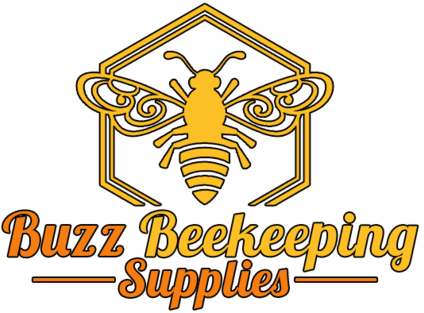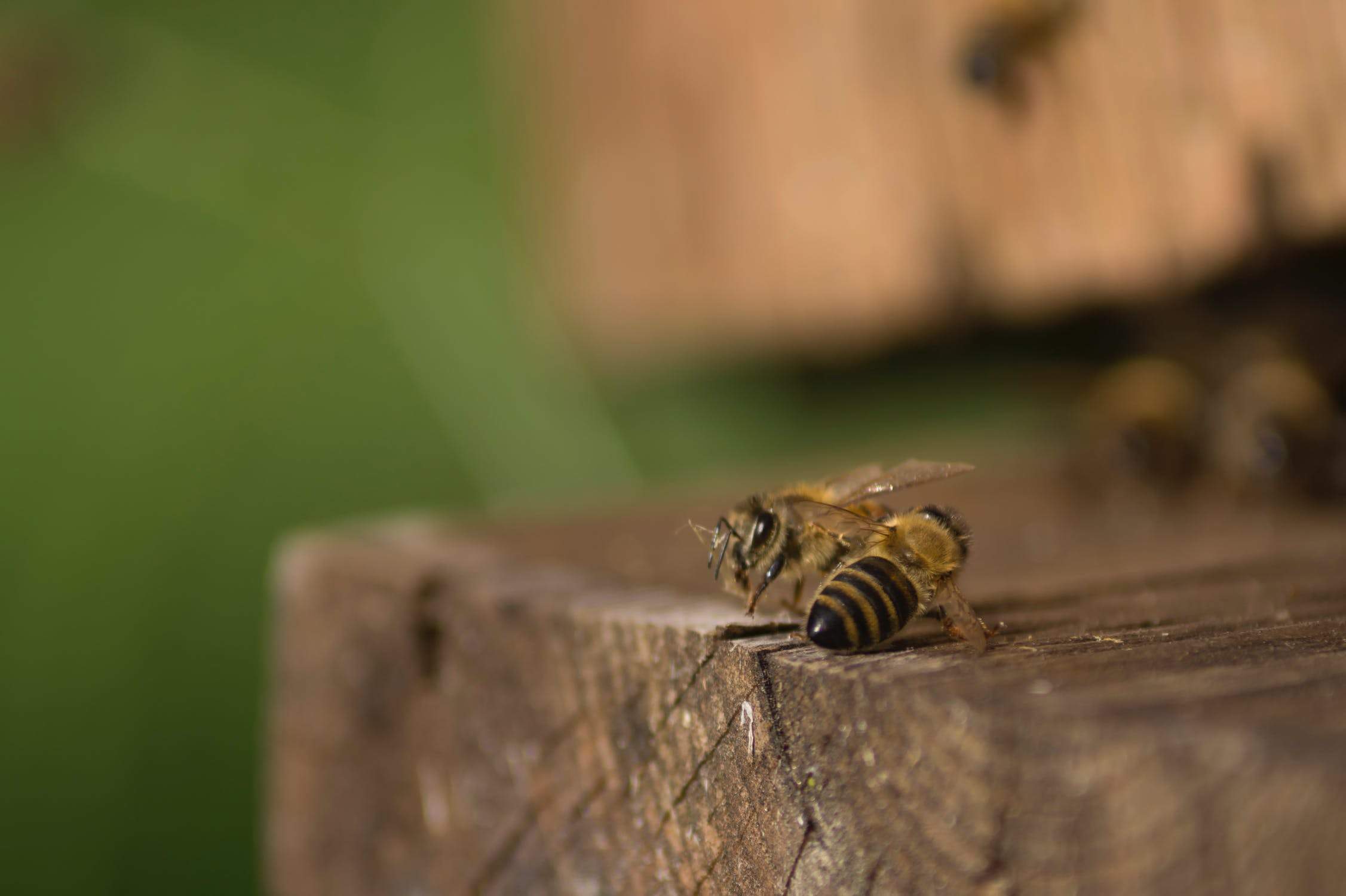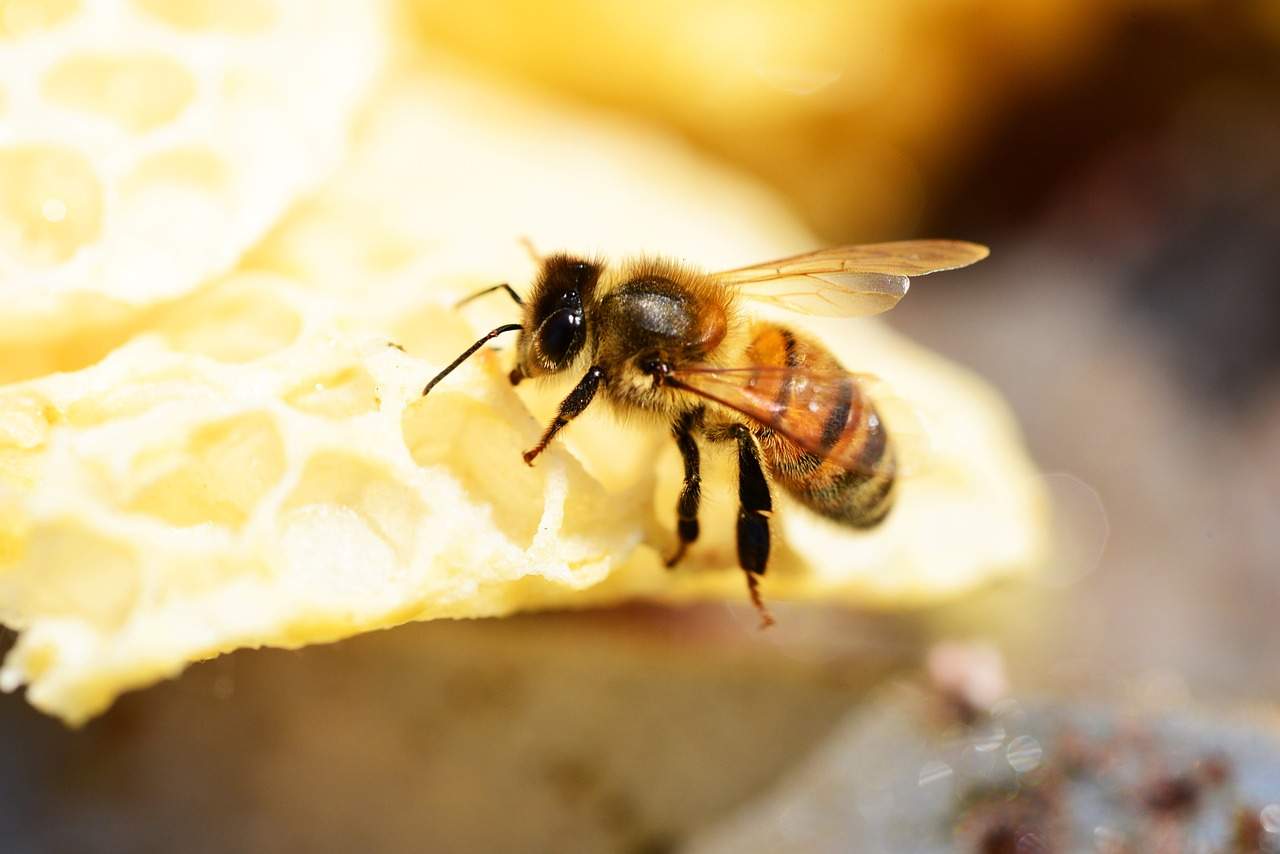Varroa Mite

The Varroa Mite has become well known and has been a big pest of honeybees since they were first introduced in Florida in the mid-1980’s.
Varroa mites are outside parasites that bother both brood and honey bees. The Varroa mites suck their blood from both adults and developing brood, and particularly drone brood. This will shorten and weakens the bee’s life span. Emerging brood may be abnormal with missing wings and legs.
If left untreated, infestations of varroa mites will increase and may kill more colonies. If the colonies are not looked at for mites, losses may sometimes be mistaken for queenlessness or winter mortality.
The adult female mites have reddish brown oval bodies that are flat. They are about 1 to 1.5mm across. They also have eight legs. They are big enough to notice with the unaided eye on the bee’s stomach or thorax.
The varroa mites flat shape can cause them to fit in between the bee’s abdominal section. This mite is usually confused with the bee louse. Nonetheless, the bee louse, which is an insect that has only six legs. Its body is slightly bigger and more circular.
Mites grow on the bee brood. A female mite will come in a brood cell a day before it is capped so it can be sealed with larva. Immature mites that come out from the eggs that she lays develops and feeds on the maturing bee larva.
When it becomes time for the adult bees to come out from the cell, many of the mites will have become adults; they would have mated, and they are ready to begin looking for other larvae or bees to parasitize.
ready to begin looking for other larvae or bees to parasitize.
Examination of the drone brood in their capped cells will most likely tell whether or not a colony has been infested. The dark mites are easy to see when they are on the white pupae when the comb is broken, or the pupae are released from their cells.
Mites move from colony to colony by drifting drones and workers. Honeybees can also get a hold of these mites when robbing little colonies.
It is best to separate captured swarms, package bees, and different new colonies from older colonies and inspect them for mites before you place them in an apiary.
Early discovery of low levels of mite infestation is the main key to successful management. It is simpler to spot infestations that are more developed than those that are just beginning.
1. Ventilated Suit – https://amzn.to/2D1hJBu
(NEW) Ventilated Jacket – https://amzn.to/2Av6piJ
2. Beekeeper YKK Suit Combo – https://amzn.to/2Xk3xLz
3. Beekeeper Journal – https://bit.ly/3xXxFl2
4. YKK Suit – https://amzn.to/2IDJALO
5. Beekeeper Jacket – https://amzn.to/2FirwTW
6. Beekeeping Gloves:
– Goatskin Beekeeping Gloves – https://amzn.to/2GYxBZW
– Cow Leather Beekeeping Gloves – https://amzn.to/2uiSExd
7. Queen Marking Kit – https://amzn.to/2Wm1kCw
– Queen Marking Pens – https://amzn.to/3c4vE8y
–Queen Marking Cage – https://amzn.to/2TDwwdQ



